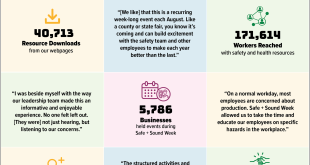The health, wellness, and self-care industry has exploded in recent years, driven by increasing awareness and a desire for more holistic approaches to well-being. From mindfulness apps to personalized nutrition plans, consumers are actively seeking ways to improve their physical, mental, and emotional health. This surge presents both immense opportunities and significant challenges for businesses looking to capitalize on the trend. Delivering genuine value and building lasting relationships requires a nuanced understanding of evolving consumer needs and a commitment to ethical and sustainable practices. So, how do you make sure you’re actually delivering on what people want and need?
Understanding the Driving Forces Behind the Boom
Let’s be real, the wellness craze didn’t just appear out of thin air. It’s fueled by some pretty significant shifts in how we think and live. And understanding these forces is key to, well, actually understanding anything about the industry itself. It’s like trying to bake a cake without knowing what flour is. Good luck with that!
Increased Awareness and Education
We’re living in an age of information, aren’t we? There’s a wealth of knowledge about health, wellness, and self-care right at our fingertips, thanks to the internet. People are more informed about the connection between lifestyle choices and overall well-being. Remember when kale was just that weird leafy green at the grocery store? Now, it’s a superfood staple. This heightened awareness is driving demand for products and services that support healthier lifestyles. Who knew eating your greens could become such a thing?
The Role of Technology
Technology has democratized access to health and wellness resources like never before. You’ve got everything from fitness trackers monitoring your steps to meditation apps guiding you through mindfulness exercises. Telehealth platforms are connecting people with healthcare professionals remotely, and AI-powered tools are even offering personalized health recommendations. It’s kinda wild when you think about it. Is technology helping us or just making us more obsessed? I honestly don’t know, but it’s definitely a factor.
Shifting Societal Values
There’s a growing emphasis on self-care and mental well-being in today’s society. People are increasingly prioritizing experiences and personal growth over material possessions. The old “hustle culture” is slowly being replaced by a desire for balance and fulfillment. Or at least, that’s what I keep hearing. I still see plenty of hustle, but maybe it’s just more conscious these days? The point is, this shift in values is creating a fertile ground for the health, wellness, and self-care market.
Meeting Consumer Expectations: Key Considerations
Alright, so you get why everyone’s so into wellness. But how do you actually meet their expectations? It’s not enough to just slap a “natural” label on something and call it a day. Consumers are savvier than that. You need to think about authenticity, personalization, and accessibility.
Authenticity and Transparency
People crave genuine connections. They want to know where your ingredients come from, how your products are made, and what your company stands for. Transparency builds trust, and trust is everything in this market. Don’t be afraid to show the behind-the-scenes stuff, even if it’s not always perfect. Imperfection can be pretty charming, you know?
Personalization and Customization
One-size-fits-all is so last decade. People want solutions tailored to their specific needs and preferences. This could mean offering personalized nutrition plans, customized workout routines, or even just letting customers choose the scent of their aromatherapy candles. The more you can cater to individual needs, the better. And it doesn’t have to be rocket science; even a simple quiz can help point people in the right direction.
Accessibility and Affordability
Wellness shouldn’t be a luxury available only to the wealthy. It should be accessible to everyone, regardless of their income or background. Consider offering a range of price points, partnering with community organizations, or creating educational content that’s freely available online. After all, what good is a miracle cure if nobody can afford it? That’s just my two cents.
Navigating the Challenges: Pitfalls to Avoid
It’s not all sunshine and green smoothies in the world of wellness. There are some serious pitfalls to watch out for. Like accidentally selling snake oil. Or maybe just getting caught up in the hype and making promises you can’t keep.
Greenwashing and Misleading Claims
Don’t pretend to be something you’re not. Consumers can spot greenwashing from a mile away, and they won’t hesitate to call you out on it. Back up your claims with solid evidence, and be honest about the limitations of your products or services. Is that so hard? I mean, seriously.
Lack of Scientific Backing
While some wellness practices are rooted in ancient traditions, others are based on, well, not much at all. Be wary of promoting anything that hasn’t been scientifically validated. And if you’re not sure, err on the side of caution. You don’t want to be the company that’s selling sugar pills as a cure for cancer. Yikes.
Ignoring Individual Needs
What works for one person might not work for another. It’s crucial to recognize that everyone’s body and mind are different. Avoid making blanket recommendations and encourage people to consult with healthcare professionals before making significant changes to their lifestyle. This isn’t just good practice; it’s ethical practice.
Strategies for Success in the Health, Wellness, and Self-Care Market
Okay, so how do you actually succeed in this booming market? It’s not just about having a good product or service. It’s about building a strong brand, fostering a sense of community, and staying ahead of the curve.
Building a Strong Brand Identity
Your brand is more than just a logo and a color scheme. It’s the story you tell, the values you embody, and the connection you create with your customers. Define your brand’s mission and values, and make sure they resonate with your target audience. What do you want people to think of when they hear your brand name? “Trustworthy”? “Innovative”? “Slightly quirky but in a good way”?
Focusing on Community and Connection
Wellness is often a solitary journey, but it doesn’t have to be. Create opportunities for people to connect with each other and share their experiences. This could be through online forums, in-person workshops, or even just a well-curated social media feed. Remember, people are looking for more than just products; they’re looking for connection.
Embracing Innovation and Adaptability
The health, wellness, and self-care market is constantly evolving. New trends emerge, new technologies are developed, and consumer preferences shift. To stay ahead of the game, you need to be willing to experiment, adapt, and embrace innovation. Don’t be afraid to try new things, even if they seem a little weird at first. After all, who knew activated charcoal would become a thing?
The Future of Health, Wellness, and Self-Care
So, what does the future hold? Well, if I had a crystal ball, I’d be on a beach somewhere instead of writing this. But I can make some educated guesses based on current trends.
Integration with Traditional Healthcare
I think we’ll see a greater integration of wellness practices with traditional healthcare. Doctors may start recommending mindfulness exercises alongside medication, and insurance companies may start covering alternative therapies like acupuncture. The line between “Western” and “Eastern” medicine is already blurring, and I think that trend will only continue.
Increased Emphasis on Preventative Care
Instead of just treating illnesses, we’ll focus more on preventing them in the first place. This could mean personalized nutrition plans, genetic testing to identify potential health risks, and a greater emphasis on lifestyle factors like sleep and stress management. An ounce of prevention, as they say, is worth a pound of cure. And probably cheaper, too.
The Rise of Biohacking and Personalized Medicine
Get ready for some futuristic stuff! Biohacking involves using technology and data to optimize your body and mind. Personalized medicine tailors treatments to your unique genetic makeup. This stuff is still in its early stages, but it has the potential to revolutionize healthcare as we know it. Will we all be cyborgs in the future? Maybe. Hopefully, fashionable ones.
Delivering on the health, wellness, and self-care boom isn’t just about jumping on a trend; it’s about understanding the underlying needs and desires of consumers, being authentic and transparent, and committing to ethical and sustainable practices. It’s a challenge, for sure, but also an opportunity to make a real difference in people’s lives. So, what are your thoughts? Any wellness tips you’d like to share? I’m all ears!
 Beverage Zone
Beverage Zone



